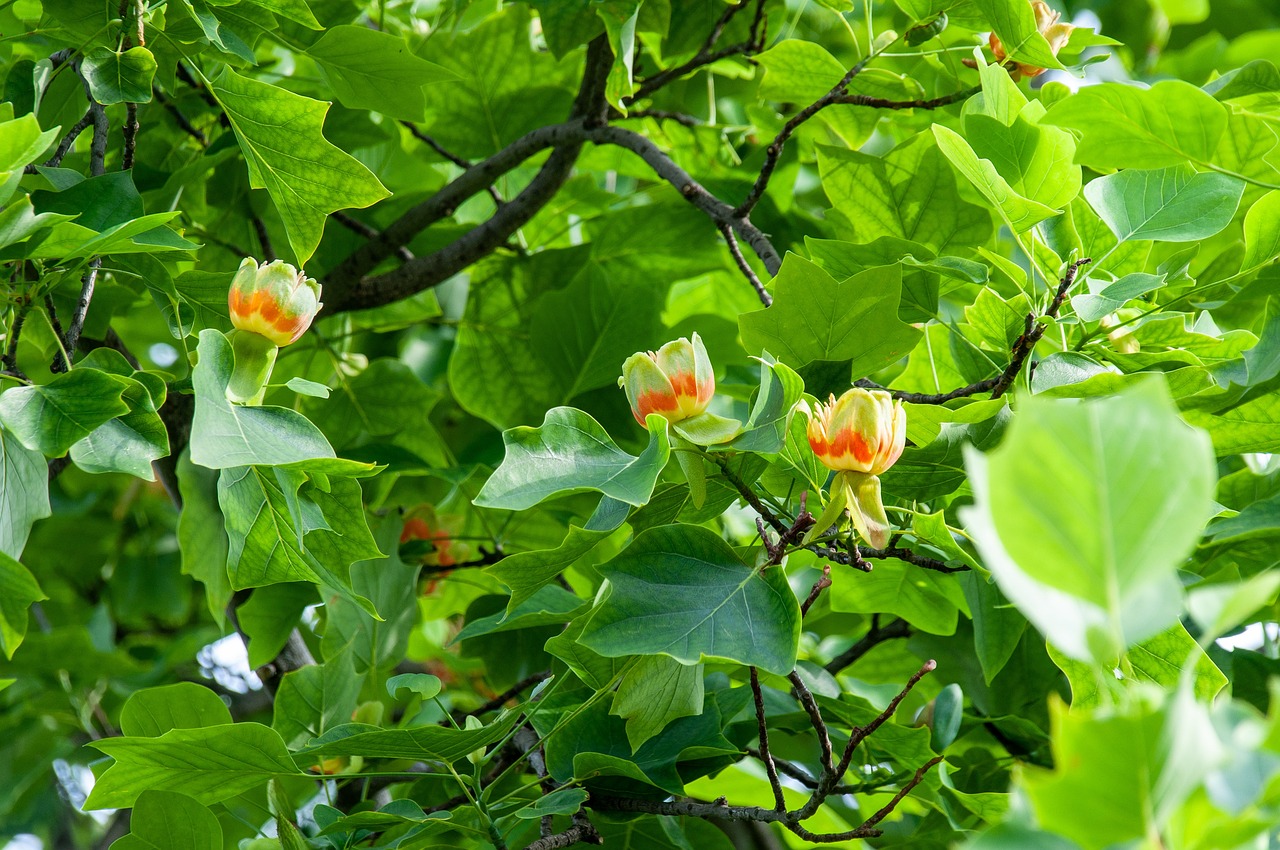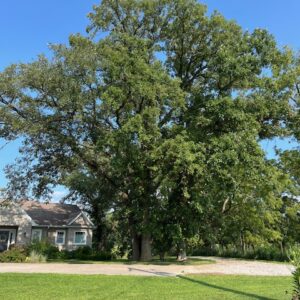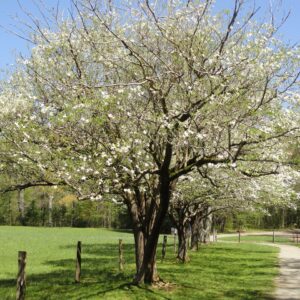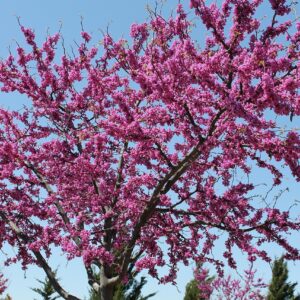Tulip Poplar (Liriodendron tulipifera), also known as Tulip Tree or Yellow Poplar, is a large deciduous tree native to the eastern United States. It is admired for its distinctive flowers, large leaves, and rapid growth. Tulip Poplar (Liriodendron tulipifera) is a majestic and versatile tree that adds beauty and ecological value to a variety of landscapes. Its distinctive flowers, large leaves, and rapid growth make it a popular choice for both ornamental and practical uses.
Appearance:
Size: Tulip Poplar is one of the tallest deciduous trees in North America, typically growing 70-100 feet (21-30 meters) tall with a spread of 40-60 feet (12-18 meters). In ideal conditions, it can reach up to 150 feet (45 meters) in height.
Leaves: The leaves are unique and easily recognizable. They are large, lobed, and measure about 4-8 inches (10-20 cm) long and wide. The leaves have a distinctive tulip-like shape with four lobes and a notch at the tip. They are bright green in summer and turn yellow in the fall, providing vibrant seasonal color.
Flowers: The Tulip Poplar’s flowers are one of its most striking features. They bloom in late spring to early summer (May to June). The flowers are tulip-shaped, about 2-3 inches (5-7.5 cm) long, and are greenish-yellow with an orange base. They are somewhat inconspicuous among the foliage but are aromatic and attractive to pollinators like bees.
Fruit: The fruit is a cone-like aggregate of samaras (winged seeds) that matures in late summer to fall. The samaras are green and turn brown as they dry. The fruit is not particularly ornamental but provides food for birds and small mammals.
Bark: The bark is light gray to brown and smooth when young, becoming furrowed and ridged with age. The mature bark has a more rugged appearance with deep fissures.
Habitat: Tulip Poplar prefers well-drained, fertile soils and is commonly found in moist, bottomland forests, upland woods, and along riverbanks. It thrives in a range of soil types but does best in deep, loamy soils. It is hardy in USDA Hardiness Zones 4 to 9.
Uses:
Ornamental: The Tulip Poplar is valued for its large size, distinctive foliage, and showy flowers. It is often used as a specimen tree, in large landscapes, or in reforestation projects. Its broad canopy provides excellent shade.
Economic: The wood of the Tulip Poplar is used in a variety of applications, including furniture, cabinetry, and millwork. It is light, straight-grained, and easy to work with.
Ecological: The tree provides habitat and food for various wildlife. The flowers attract pollinators like bees, while the fruit and leaves offer food for birds and insects. The tree also helps stabilize soil and prevent erosion.
Care:
Pruning: Prune Tulip Poplar in late winter or early spring before new growth begins. Pruning helps maintain the tree’s shape, remove any dead or damaged branches, and improve air circulation within the canopy.
Watering: The tree requires regular watering, especially during dry periods. It prefers consistently moist soil but can tolerate brief periods of drought once established.
Fertilizing: A balanced, slow-release fertilizer applied in early spring supports healthy growth and flowering. The tree is not overly demanding in terms of fertilization.
Pests and Diseases: Tulip Poplar can be affected by pests such as aphids and scale insects, as well as diseases like leaf spot and cankers. Regular monitoring and proper care can help manage these issues.





